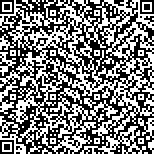| 摘要: |
| 建筑室内空间LED照明过量的蓝光
辐射会对视网膜造成损伤。建筑室内照明的
辐射与环境反射光谱分布有关。为了得出建
筑室内空间环境反射光谱的蓝光辐射强度,
在7种不同照度下测量和计算了5 000 K LED
光源的直射光谱和环境反射光谱。结果表明
LED照明在建筑室内空间实际应用中,环境
反射光谱的辐射强度只有光源直接辐射强
度的20%,眼睛实际接收到的辐射强度远远
低于蓝光辐射安全限值,不会造成视网膜损
伤。对于主要发出蓝光的光源长时间高强度
照明对视网膜仍可能存在潜在危害。 |
| 关键词: 室内空间 发光二极管 视线角度 蓝光危害 光谱功率分布 |
| DOI:10.13791/j.cnki.hsfwest.20210115 |
| 分类号: |
| 基金项目:国家自然科学基金面上项目(51478060);科技部
国家重点研发计划(2018YFC0705102-04) |
|
| Measurement and Analysis of Blue Light Hazard of LED Light in Indoor Environment |
|
HE Wei,YANG Chunyu,LIANG Shuying
|
| Abstract: |
| The lighting environment of the building’s indoor space is closely related to people’s
health and comfort. Since LED light sources have great advantages in energy saving and control,
they have gradually replaced traditional lighting sources. Previous studies have proved that
white LED lighting with rich blue light spectrum has a wide range of beneficial effects in non-
visual effects, such as regulating circadian rhythm, improving daytime alertness and work
performance. LEDs are widely used in architectural lighting. Compared with other light sources,
white LEDs tend to generate more short-wavelength radiation energy. Its spectral distribution
and energy radiation characteristics make people feel worry about the risk of harm to the eyes.
Excessive blue light radiation reaches the retina, if the intensity and time are long enough, it will
cause obvious photochemical damage.
Generally, the illuminance level of building indoor lighting is relatively low, and under
normal use conditions, it will not cause eye damage. Some recent studies have found that
increasing the level of indoor illumination in buildings can compensate for the disadvantages
caused by the lack of natural light. Especially for people who work or study indoors for a
long time, the lack of sufficient light (including artificial light and natural light) is not good
for health and mood. High illuminance levels can improve people’ daytime activities, but
excessive blue light radiation has potential visual hazards. Evaluating the blue light radiation
intensity of architectural lighting under high illuminance levels is very important for the
application of LEDs in architectural lighting. When evaluating the safety of light radiation
in an indoor lighting environment, the actual use of lighting sources in the building and the
characteristics of human activities should be fully considered. Under normal circumstances,
the luminaire is installed on the ceiling. People working in the architectural space will not
look directly at the light source. The blue light radiation energy of the lighting source will not
completely enter people’s eyes. The radiation level received by the eyes is largely related to the
line of sight. It is related to the reflection of the environment in the field of view. The intensity
of the spectral radiation entering the human eye through the environmental reflection in the
field of view of the human eye will be attenuated to different degrees. Due to the different
reflection coefficients of the environmental material in the field of view, the light radiation
intensity received by the human eye at different viewing angles different.
In this study we measured the direct radiation spectrum of the lighting source in the
laboratory environment, and as a reference line. The spectrum and intensity of environmental reflection in the visual field were measured in the vertical direction of the eye position when sitting and standing. Through comparative analysis,
the results showed that the LED used in the building The radiation intensity of the lamp is much higher than the spectrum radiation energy
received by the eyes from the reflected light from the environment, and the radiation intensity reaching the eyes is less than 20% of the radiation
intensity of the light source, which means that as long as people do not look directly at the light source, the radiant energy into eyes from the
LED light source in the building space is very small. Using the radiation of the light source itself to evaluate the application of LEDs in buildings
exaggerates the potential hazards of the blue light spectrum, and may damage the application prospects of LEDs.
Architectural lighting will not use high color temperature and illuminance level, and its illuminance level is usually relatively low. Under
normal use, people do not have to worry about using LED lighting in buildings to cause retinal damage. Considering that high-illuminance
building indoor lighting has obvious advantages in non-visual aspects, it is possible to improve indoor lighting levels in the future. As long as
the light level of building indoor lighting does not exceed the blue radiation limit, the use of LED lamps in buildings is sufficient safety. The blue
light radiation received by human eyes is related to the angle of sight, the light of architectural lighting fixtures does not directly enter the eyes,
and its potential harm is very small. For people who use computers for office work, the light from electronic screens directly enters the eyes,
and full consideration should be given to limiting the time of using electronic products. Since looking directly at the light source is much more
harmful to the eyes than under normal conditions. In order to prevent blue light radiation from damaging the retina, the application of white light
LED in the work space should limit the surface brightness of the light source. In order to avoid blue light damage to the retina caused by human
eyes at very high illumination levels, the design of indoor lighting and practice are important. |
| Key words: Interior Space Light-Emitting Diode Line of Sight Angle Blue Light Hazards Spectral Power Distribution |


